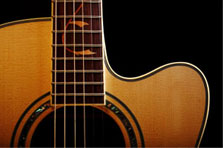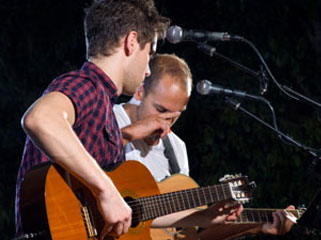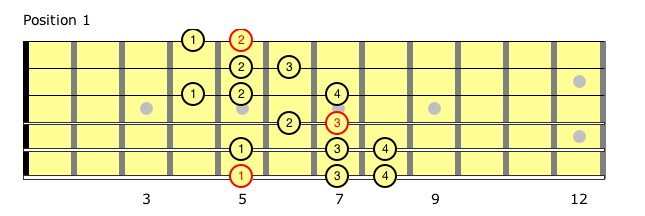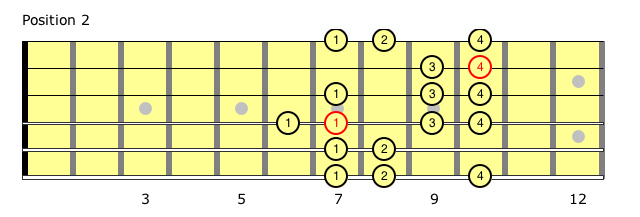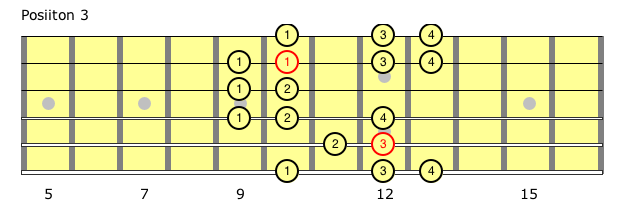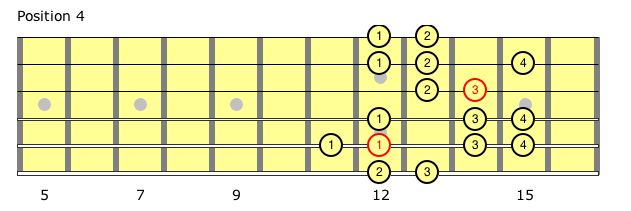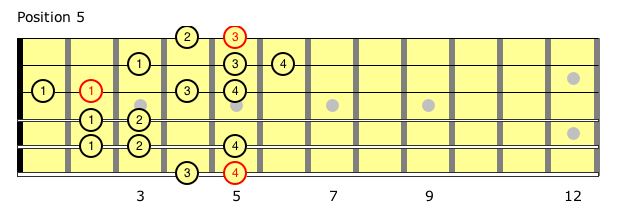
Blog
Aug 03 2015 |
Harmonic Minor ScaleBy: Frank Macri Posted in: Guitar Scales The harmonic minor scale is an exotic sounding scale. It has a character that is interpreted by many as a classical or neoclassical sound. The harmonic minor consists of a natural minor scale with a raised seventh degree. Doing this creates a leading tone to the scale, which gives a very strong pull from the last note of the scale back to the tonic. A B C D E F G Natural Minor Scale 1 2 b3 4 5 b6 b7 A B C D E F G# Harmonic Minor Scale 1 2 b3 4 5 b6 7 The harmonic minor scale is broken down into 5 positions that will cover the entire fretboard. We will be learning the harmonic minor scale positions in A. Position 1 starts on the root note A. (root note highlighted in red) Position 2 starts on the second degree (2) of the scale “B” Position 3 starts on the 4th degree (4) of the scale “D“ Position 4 starts on the 5th degree (5) of the scale “E“ Position 5 starts on the raised 7th degree (7) of the scale “G#“ Now that we’ve learned the five harmonic minor scale positions, lets look at some examples of typical harmonic minor chord progressions. Notice that the progressions use chords from the A natural minor scale, except the V7 chord, E7, which comes from the harmonic minor scale. The first is a simple harmonic minor progression: | Am | % | E7 | % | The next harmonic minor progression is based off of Steve Miller’s 1982 hit song “Abracadabra“. | Am | Dm | E7 | Am | Santana’s 1999 number one hit song “Smooth” is based on this harmonic minor chord progression. | Am | F E7 | Am | F E7 | “Walk, Don’t Run” is an instrumental composition written and recorded by The Ventures. Check out the progression based off of this song. | Am G | F E7 | Am G | F E7 | The final harmonic minor chord progression is similar to Gary Moore’s “Still Got The Blues“. | Am | Dm | G | C | F | Bmi7b5 | E7 | E7 |
|
